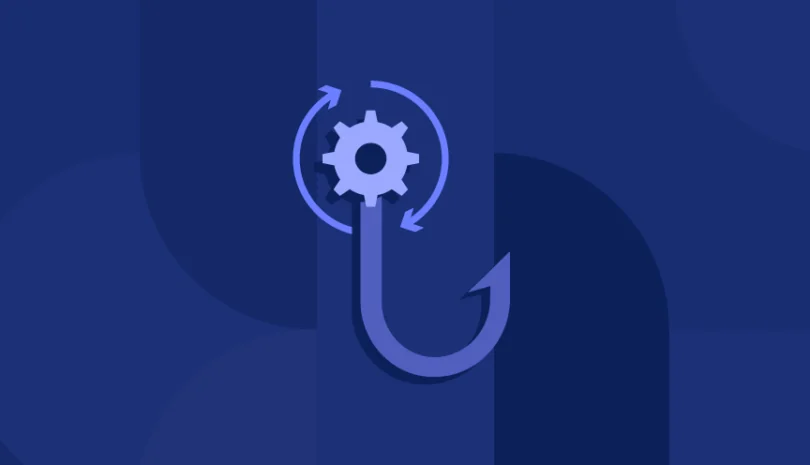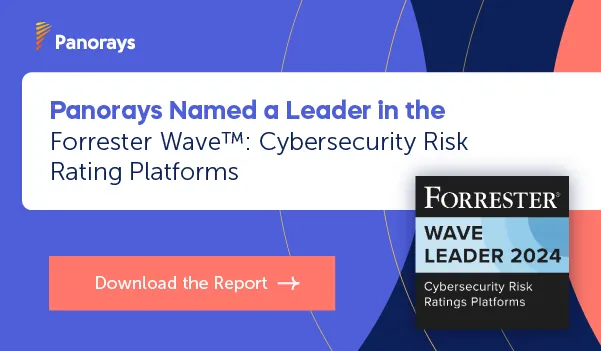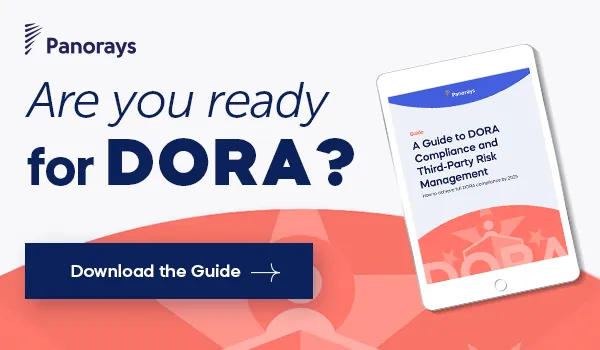Over 29 billion records have been breached so far this year, and it’s only February. These are also only the known records breached, there are more that haven’t yet been discovered. With so many leading organizations last year such as MOVEIt and 23andMe exposed to data breaches, supply chain attacks and unauthorized access to sensitive and personal customer data and information, many are stepping up their cybersecurity risk management, which includes third-party risk management.
At the same time, more than half of organizations feel their security budgets are not keeping up with the increased complexities of third-party risk management. If your organization fits into this category, you might want to consider lower-cost tools for TPRM such as a vulnerability assessment.
What is a Vulnerability Assessment?
A vulnerability assessment is the process of identifying, organizing and prioritizing the weak points within a company’s network, computer systems, applications and software (technology stack), and device policies. A comprehensive vulnerability assessment yields powerful and relevant insights that key decision-makers require to identify the specific threats your organization might face, so you can develop proactive and preventive measures that empower your team to respond appropriately.
The Importance of a Vulnerability Assessment in TPRM
While larger organizations have a comprehensive vulnerability management system in place, including regular patching of vulnerabilities and software and firewall updates, many third parties do not. As a result, cybercriminals often target third parties as a pathway to launching attacks against these larger organizations.
In addition, vulnerability assessments are becoming increasingly critical in third-party risk management as more organizations rely on third parties, suppliers, external contractors and agencies for various services and IT infrastructure. These third parties pose potential risks to your organization. Comprehensive vulnerability assessments, however, empower your security team to apply consistent and thorough approaches to identifying and neutralizing these looming threats. This proactive approach helps mitigate threats before they become serious problems that significantly damage your organization.
Other benefits include:
- Quickly identify threats and vulnerabilities in third-party services or software integrated into your IT infrastructure.
- Proactively remediate any gaps to protect sensitive information and data in collaboration with your third parties.
- Verify both your organization’s and your third parties’ adherence to regulatory policies such as HIPAA and PCI DSS, which have strict requirements with regard to cybersecurity. You can then make proper adjustments to help avoid costly missteps that may lead to legal consequences, penalties and fines.
- Protection against costly data breaches and unauthorized access from third parties before such incidents occur. Think of it as a cost-effective security audit that shows you precisely where you must improve before disaster hits.
The Most Common Vulnerabilities Posed by Third Parties
Although many organizations face hundreds, even thousands, of risks every second, not all cyber threats are equal. Treating them all with the same urgency wastes your IT, security and compliance team’s time and resources. A proper vulnerability assessment takes a more nuanced approach, assigning priority and urgency to each risk to understand which deserves the most focus and which can be delegated or delayed. In other words, you can focus your time and resources on the areas that matter most and pose the most potential damage to your business while avoiding low-risk investments that deplete your time and energy.
Common Vulnerabilities and Exposures (CVEs) related to third-party software can vary widely depending on the nature of the software and the specific vulnerabilities discovered.
However, some types of CVEs commonly associated with third-party software include:
- Remote Code Execution (RCE): Vulnerabilities that allow attackers to execute arbitrary code on a system remotely are particularly dangerous. Third-party software with RCE vulnerabilities can be exploited by attackers to gain unauthorized access to systems, potentially leading to data breaches, system compromise, or further exploitation of the network.
- SQL Injection (SQLi): This type of vulnerability occurs when an attacker is able to manipulate SQL queries through input fields in an application, often resulting in unauthorized access to databases or the execution of malicious commands. Third-party software with SQL injection vulnerabilities can expose sensitive data stored in databases to unauthorized access or manipulation.
- Cross-Site Scripting (XSS): XSS vulnerabilities allow attackers to inject malicious scripts into web pages viewed by other users. Third-party software with XSS vulnerabilities can be used by attackers to steal session cookies, redirect users to malicious websites, or deface web pages, among other malicious activities.
- Cross-Site Request Forgery (CSRF): CSRF vulnerabilities allow attackers to trick users into performing unintended actions on web applications where they are authenticated. Third-party software with CSRF vulnerabilities can be exploited to perform actions on behalf of authenticated users without their consent, such as changing account settings or making unauthorized transactions.
- Information Disclosure: Vulnerabilities that lead to the unintended disclosure of sensitive information, such as passwords, credentials, or personal data, can have serious consequences for organizations. Third-party software with information disclosure vulnerabilities may inadvertently expose sensitive data to unauthorized parties, potentially resulting in privacy violations or compliance issues.
These are just a few examples of the types of CVEs commonly associated with third-party software. It’s essential for organizations to stay vigilant and apply patches and updates promptly to mitigate the risks posed by CVEs in third-party software. Additionally, thorough vetting and ongoing monitoring of third-party software vendors can help reduce the likelihood of introducing vulnerable software into an organization’s environment.
How to Conduct a Vulnerability Assessment
There’s no single method for conducting a vulnerability assessment. Your approach depends on your needs, resources and desired outcomes. However, some techniques and best practices increase your organization’s ability to conduct high-returning assessments that yield maximum protection into the future.
The first big decision is to decide whether you want to conduct the assessment in-house or outsource the task to a third party. For large companies with deep resources and highly complex compliance requirements with regard to data protection and privacy, keeping things under the organization’s roof can make sense (practically and financially).
But for many companies, outsourcing is more efficient and cost-effective.
A typical vulnerability assessment involves the following type of framework:
- Planning. Determine which of your organization’s networks and systems should be assessed. Identify where your sensitive data resides precisely and you should concentrate your energy. During this phase, you’ll meet with all the necessary players and set clear expectations so there will be no confusion or knowledge gaps. Since your third parties often connect to your organization’s sensitive data and information, their vulnerabilities could expose your organization to cyber risk. Therefore, it’s important to understand even at this planning stage that your third parties must also undergo vulnerability assessments.
- Threat detection. Detect threats using a variety of tools, including endpoint detection, incident response, Security Information and Event Management (SIEM), and simple firewalls and antiviruses. AI-based systems are used in many threat detection tools today, enabling organizations to analyze larger amounts of data and suspicious behavior far more quickly and accurately than before.
- Analysis. If you intend to be thorough in your threat-detection effort, you may gather dozens or hundreds of findings. During the analysis phase, sift false alarms, prioritize vulnerabilities based on potential impact and ease of repair. This will provide you with a clear path forward.
- Remediation. It’s one thing to know the risks your organization faces. If you want to make real progress, however, you need to do something about the vulnerabilities. In the final phase, you implement the appropriate solutions to address underlying problems and protect your business as much as possible.
How Often Should You Conduct a Vulnerability Assessment?
A vulnerability assessment isn’t a one-time action you conduct and then may forget about. It’s something that should ideally be repeated. You should conduct assessments at least once per quarter. For large organizations in high-risk environments, it may be necessary to conduct some type of vulnerability assessment every month, possibly even every week.
You should also conduct a vulnerability assessment when you:
- Deploy new systems or services. You onboard a new supplier, external contractor, service, agency or distributor, especially one that shares or exposes your organization’s data or provides a critical service to your organization.
- Make a change to your existing systems or infrastructure. Any re-configuration or update to the current system warrants an assessment of new risks posed to your organization.
- Identify new potential threats. If you hear about a new data breach or cyberattack that could be relevant to your organization or third parties, it’s time to conduct another vulnerability assessment.
- Learn about updates to relevant compliance and regulations. As different security guidelines and frameworks evolve, it’s important to ensure your organization and third parties are complying with them and maintaining a strong security posture.
How Panorays Manages Third Party Risk
Although vulnerability assessments are important to third-party risk management, they are challenging for organizations because they do not have access to a third-party’s network or system. They need a standardized process for evaluating how much risk these third parties pose to their organization and their compliance with current, relevant regulations, standards and guidelines related to cybersecurity. At the same time, they also need to gain a greater understanding of the impact of data breaches or other security incidents of third parties on their organization. This includes avoiding fees and penalties related to exposing customer data and violation of compliance.
Panorays combines cybersecurity questionnaires with external attack surface assessments to deliver 360-degree ratings of your supplier risk. Its AI-powered and auto-generated questionnaires enable quick and accurate completion with questions based on similar past questionnaires and responses based on verified vendor documents. Its attack surface assessments continuously monitor thousands of assets to deliver greater visibility into risks posed by third, fourth, fifth and n-th parties along your supply chain.
That means you’ll be the first to know if a data breach or supply chain attack impacts your suppliers and the exact details of how they affect your organization as a result. Finally, you’ll learn how to collaborate with your suppliers to remediate any security gaps ahead of time. Remediation will take place in the quickest possible way, after prioritizing vulnerabilities according to the level of risk.
Want to learn more about how Panorays can manage your third-party risk? Get a demo today.
FAQs
-
A vulnerability assessment is an evaluation of risk posed to your organization’s weak points that could be exploited within the company’s network, computer systems, applications, software and devices. Vulnerability assessments are becoming increasingly important in an organization’s third-party risk management as they are incorporated more frequently into its IT infrastructure. They are an important means of defense in mitigating data breaches, third-party and supply chain attacks and other security incidents.
-
The four components of a vulnerability assessment include:
- Planning. Identify which areas of your organization need to be evaluated, and which third parties have access to or share sensitive data and information with your organization.
- Threat detection. A variety of tools are employed to identify threats posed to your organization, many of which use AI to leverage quicker analysis and accuracy of threat detection at scale.
- Analysis. Prioritize vulnerabilities according to the potential impact they pose on your organization and how easy they are potentially to repair.
Remediation. Patch vulnerabilities, update and reconfigure software and segment networks to eliminate risk and strengthen your security posture.
-
The different types of vulnerability assessments include:
- Host assessments. Host assessments evaluate the potential for attacks on an organization’s systems, servers, workstations or other network hosts.
- Network and wireless assessment. These assessments identify the potential for network-based attacks via unauthorized access to both public and private networks and other network-accessible resources.
- Database. Database assessments identify vulnerabilities and configurations in databases and their potential for attacks such as SQL and NoSQL injection as well as rogue databases and insecure test environments.
- Application assessment. These assessments evaluate the vulnerabilities and misconfigurations in web and mobile applications and their source code.






